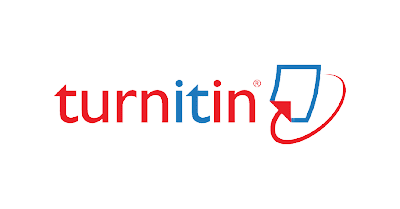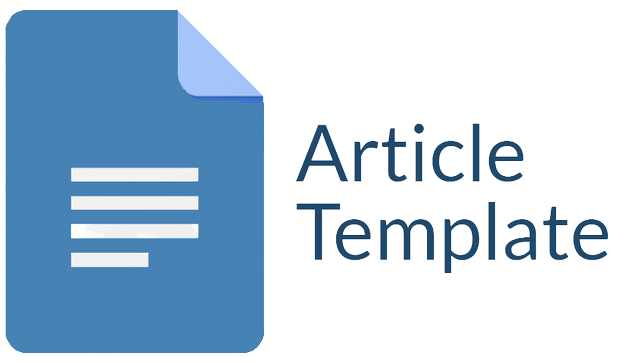PERENCANAAN ARSITEKTUR ENTERPRISE SISTEM INFORMASI SEKOLAH MENGGUNAKAN TOGAF ADM
(Studi Kasus: MTs dan MA Al Irfan)
Abstract
Perancangan arsitektur enterpise menggunakan metodologi Framework The Open Group Architecture Framwork (TOGAF) Administration Development Method (ADM), mempertimbangkan kepentingan organisasi secara keseluruhan dan tahapan-tahapan dari metodologi tersebut diterjemahkan kedalam aktivitas perancangan arsitektur enterprise. Tahapan perancangan arsitektur enterprise sangatlah penting dan akan berlanjut pada tahapan berikutnya yaitu rencana implementasi. Luaran dari tahapan ini akan menghasilkan sebuah arsitektur enterprise yang pada nantinya bisa dijadikan oleh MTs dan MA Al-Irfan Purwakarta untuk mencapai tujuan yang strategis sesuai dengan visi dan misi sekolah. Perancangan arsitektur enterprise sistem informasi akan menghasilkan empat arsitektur domain yang berbasis pada empat pilar yaitu architekture bisnis, data, aplikasi dan teknologi.
Downloads
References
Akhir, T. P. laporan. (2019). Laporan Akhir Penyusunan Master Plan Teknologi Informasi dan Komunikasi (TIK) Kabupaten Lebak. In Laporan Akhir (Vol. 1, Issue 201310200311137).
Andini, G. T. (2019). MANAJEMEN PENGEMBANGAN KURIKULUM. Jurnal Isema : Islamic Educational Management, 3(2). https://doi.org/10.15575/isema.v3i2.5008
Anisimova, T. I., Sabirova, F. M., & Shatunova, O. V. (2020). Formation of design and research competencies in future teachers in the framework of STEAM education. International Journal of Emerging Technologies in Learning, 15(2). https://doi.org/10.3991/ijet.v15i02.11537
Camelia, F. (2020). Analisis landasan ilmu pengetahuan dan teknologi. Susunan Artikel Pendidikan, 5(1).
Ellyzabeth Sukmawati, Iwan Adhicandra, & Nur Sucahyo. (2022). Information System Design of Online-Based Technology News Forum. International Journal Of Artificial Intelligence Research, 1.2. https://doi.org/https://doi.org/10.29099/ijair.v6i1.2.593
Eskicumalı, A., Arslan, S., & Demirtaş, Z. (2015). Utilization of information and communication technologies as a predictor of educational stress on secondary school students. Turkish Online Journal of Educational Technology, 14(2).
FITRIANI, W. (2020). Artikel Pengenalan Sistem Informasi. In Binus.
Goldsmith, L. J. (2021). Using framework analysis in applied qualitative research. Qualitative Report, 26(6). https://doi.org/10.46743/2160-3715/2021.5011
Hailegebreal, S., Sedi, T. T., Belete, S., Mengistu, K., Getachew, A., Bedada, D., Molla, M., Shibiru, T., & Mengiste, S. A. (2022). Utilization of information and communication technology (ICT) among undergraduate health science students: a cross-sectional study. BMC Medical Education, 22(1). https://doi.org/10.1186/s12909-022-03296-9
Hammersley-Fletcher, L., Kılıçoğlu, D., & Kılıçoğlu, G. (2021). Does autonomy exist? Comparing the autonomy of teachers and senior leaders in England and Turkey. Oxford Review of Education, 47(2). https://doi.org/10.1080/03054985.2020.1824900
Helen, S., Baby, S., & Mridula, N. (2020). Utilization of information and communication technology tools by the extension personnel of Kerala. AGRICULTURE UPDATE, 15(1 and 2). https://doi.org/10.15740/has/au/15.1and2/1-7
Indonesia, P. R. (2015). Undang Undang Republik Indonesia Nomor 2 Tahun 1989 Tentang Sistem Pendidikan Nasional. Sistem Pendidikan Nasional.
Jogiyanto. (2014). Analisis & Desain Sistem Informasi. Andi.
Marzuki, K., & Natsir, N. (2021). Model Project Based Learning dalam Setting Pembelajaran Daring Pada Pebelajar Orang Dewasa (Studi Pada Program Kesetaraan Satuan Pendidikan Nonformal). SEMINAR NASIONAL HASIL PENELITIAN 2021 “Penguatan Riset, Inovasi, Dan Kreativitas Peneliti Di Era Pandemi Covid-19,” 1954–1963.
Pargiyani, A., Priyambadha, B., & Arwan, A. (2019). Pengembangan Sistem Informasi Akademik Pada Sekolah Dasar Islam Terpadu Insantama ( SDIT ) Malang Berbasis Website. Jurnal Pengembangan Teknologi Informasi Dan Ilmu Komputer, 3(2).
Saadati, F., Tarmizi, R. A., & Ayub, A. F. M. (2014). Utilization of information and communication technologies in mathematics learning. Journal on Mathematics Education, 5(2). https://doi.org/10.22342/jme.5.2.1498.138-147
Strom, K. J., & Viesca, K. M. (2021). Towards a complex framework of teacher learning-practice. Professional Development in Education, 47(2–3). https://doi.org/10.1080/19415257.2020.1827449
Sundoro, H. S., & Wandebori, H. (2021). Managing IT Business-Alignment Through the Implementation of IT Balanced Scorecard: A Proposed Framework. Journal of Information and Knowledge Management (JIKM), 11(1).
Yaumi, M. (2021). Media dan Teknologi Pembelajaran (Edisi Kedua). In Prenada Media Group.
Copyright (c) 2023 Jalaludin Jalaludin, Les Endahti, Denada Fatimah Zahra

This work is licensed under a Creative Commons Attribution-ShareAlike 4.0 International License.
Jurnal allows anyone to compose, correct, and do derivative works, even for commercial purposes, as long as they credit for the original work. This license is the freest. It is recommended for maximum distribution and use of licensed material.
The submitted paper is assumed not to contain any proprietary materials that are not protected by patent rights or patent applications; The responsibility for technical content and protection of proprietary materials rests with the authors and their organizations and not the responsibility of journal or its editorial staff. The primary (first/appropriate) author is responsible for ensuring that the article has been viewed and approved by all other authors. The author's responsibility is to obtain all necessary copyright waivers to use any copyrighted material in the manuscript before submission.
Jurnal Pendidikan, Sains dan Teknologi allows the author(s) to hold the copyright without restrictions and allow the author(s) to retain publishing rights without restrictions. Jurnal Pendidikan, Sains dan Teknologi CC-BY-SA or an equivalent license as the optimal license for the publication, distribution, use, and reuse of scholarly work. Jurnal Pendidikan, Sains dan Teknologi allows the author(s) to hold the copyright without restrictions and allow the author(s) to retain publishing rights without restrictions. Jurnal Pendidikan, Sains dan Teknologi CC-BY-SA or an equivalent license as the optimal license for the publication, distribution, use, and reuse of scholarly work.
In developing strategy and setting priorities Jurnal Pendidikan, Sains dan Teknologi recognize that free access is better than priced access, libre access is better than free access, and libre under CC-BY-SA or the equivalent is better than libre under more restrictive open licenses. We should achieve what we can when we can. We should not delay achieving free in order to achieve libre, and we should not stop with free when we can achieve libre.
Jurnal Pendidikan, Sains dan Teknologi is licensed under a Creative Commons Attribution-ShareAlike 4.0 International License.
You are free to:
- Share a copy and redistribute the material in any medium or format
- Adapt a remix, transform, and build upon the material for any purpose, even commercially.
- The licensor cannot revoke these freedoms as long as you follow the license terms.






